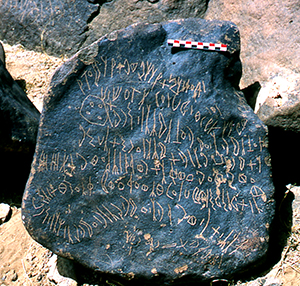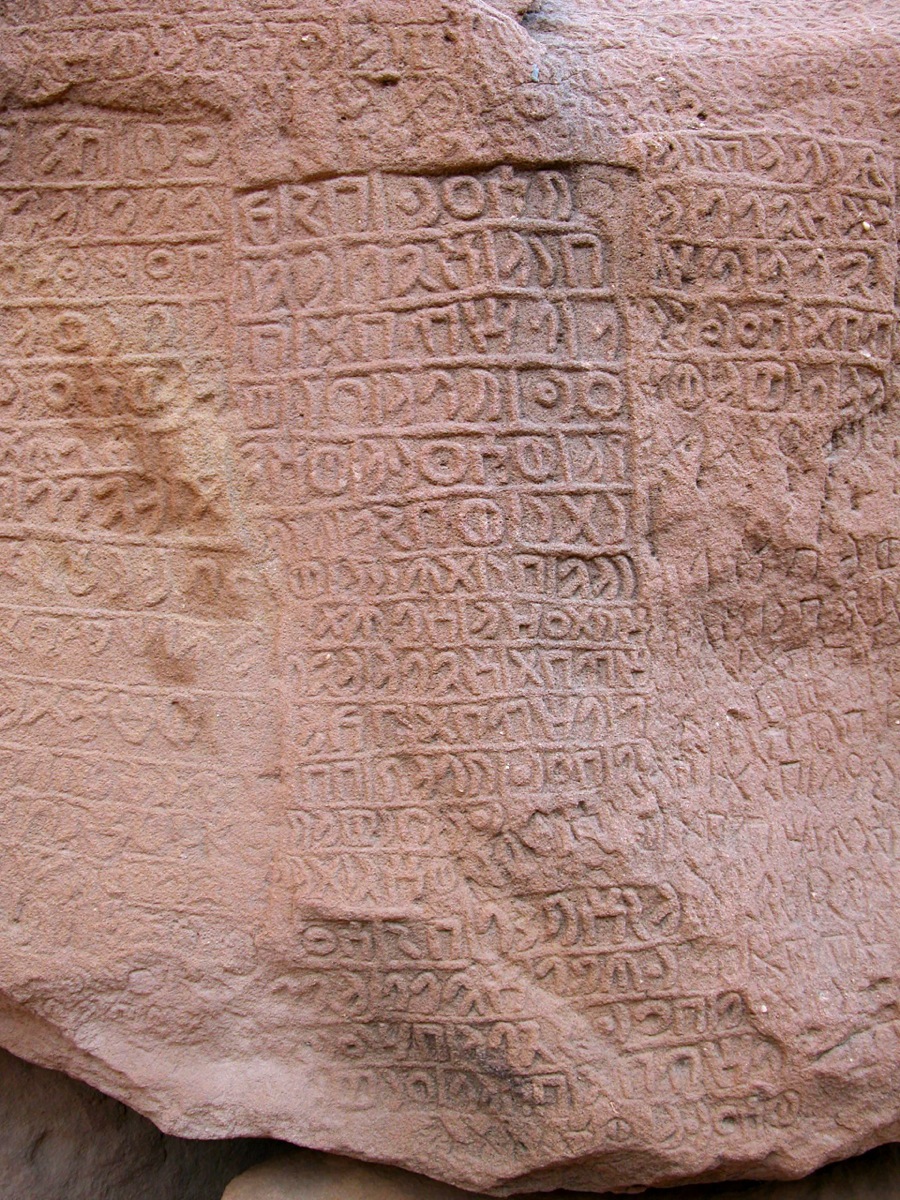Please visit: https://ociana.osu.edu/

The Arabian Peninsula lies at the heart of the Middle East. Today, it is of enormous strategic and commercial importance and this was also the case in antiquity. Yet, most of what we know about its ancient history, languages and cultures comes from contemporaries looking at it from outside, such as the Assyrians, Greeks, and Romans, or from much later reports on what was considered the "Age of Ignorance". Excavations and surveys have been undertaken in the rest of the Middle East for more than a century and a half, but the archaeological exploration of Arabia is still in a pioneering stage. For a brief history of Ancient Arabia and a timeline click here.
The western two-thirds of the Arabian Peninsula were home to numerous literate societies. Indeed, one of the two branches of the alphabet — the South Semitic script family — was used exclusively in ancient Arabia, and still exists in the vocalized alphabets used in Ethiopia. Throughout the Peninsula, literacy was extremely widespread, not only among the settled peoples but — exceptionally — also among the nomads, who covered the rocks of the deserts from southern Syria to Yemen with scores of thousands of graffiti, many of which give us a vivid picture of their daily life and emotions.
Scholars and travellers have been recording Ancient North Arabian inscriptions in what is now Syria, Jordan and Arabia since the 1858, and by now some 70,000 are known, with more being discovered every year. However, their finds have been published in hundreds of books and articles in numerous languages and many are extremely difficult to track down, even for the specialist. There are also very few research tools such as up-to-date lists of names, grammars, dictionaries, etc.

The Online Corpus of the Inscriptions of Ancient North Arabia [OCIANA] aims to transform our knowledge of the history, languages and cultures of ancient Arabia. It is doing this by creating a digital corpus of all known pre-Islamic inscriptions in North and Central Arabia. It provides a reading of each text both in roman transliteration and in fonts reproducing the ancient letters, together with a translation in English, references to earlier readings, commentary where necessary, bibliography, and all known information about the inscription (provenance, carving technique, relationship to other texts or to rock drawings, structures, etc.). Photographs (when available) and facsimiles of each text will also be shown on each record and will eventually be downloadable free at publishable resolutions. The Corpus will be easily updatable as new discoveries are made and will be fully searchable for names, words, grammatical features and subjects.
A similar corpus of the Ancient South Arabian inscriptions is being created by the Digital Archive for the Study of Pre-Islamic Arabian Inscriptions (DASI) which is based in the Scuola Normale Superiore, Pisa. OCIANA and DASI have strong links and it will be possible to search the data in both corpora through a single portal.
OCIANA is funded by a grant from the Arts and Humanities Research Council of Great Britain and is based at the Khalili Research Centre, University of Oxford.